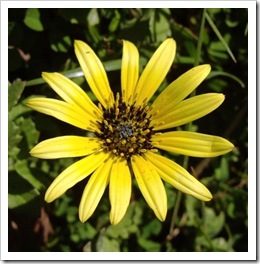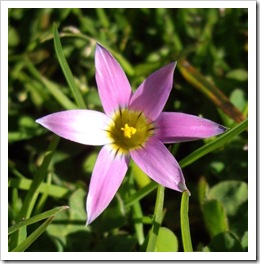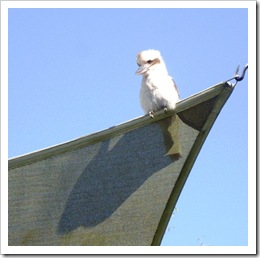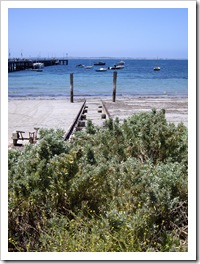It really is amazing how pretty weeds can be; but then any plant growing where it is not wanted is by definition a weed.
Cape Weed (Arctotheca calendula) originally from Cape Province in South Africa is an attractive, hardy groundcover with yellow daisy-like flowers. The only problem is that it is too effective as a groundcover when it escapes from the garden starving the grass of light in spring and early summer. Once the full heat of summer has burnt the Cape Weed off, all that is left is bare earth. There is one thing though this weed is valued by some graziers for the nutritional value that it offers stock (Southern Tasmanian Councils Authority [^]).
Another pretty pasture weed is Onion Grass (Romulea rosea [^]), however this appears to have no redeeming features other than it’s looks.
Finally an innocuous example of farm flora – lichen on the trunk of an ash tree.





